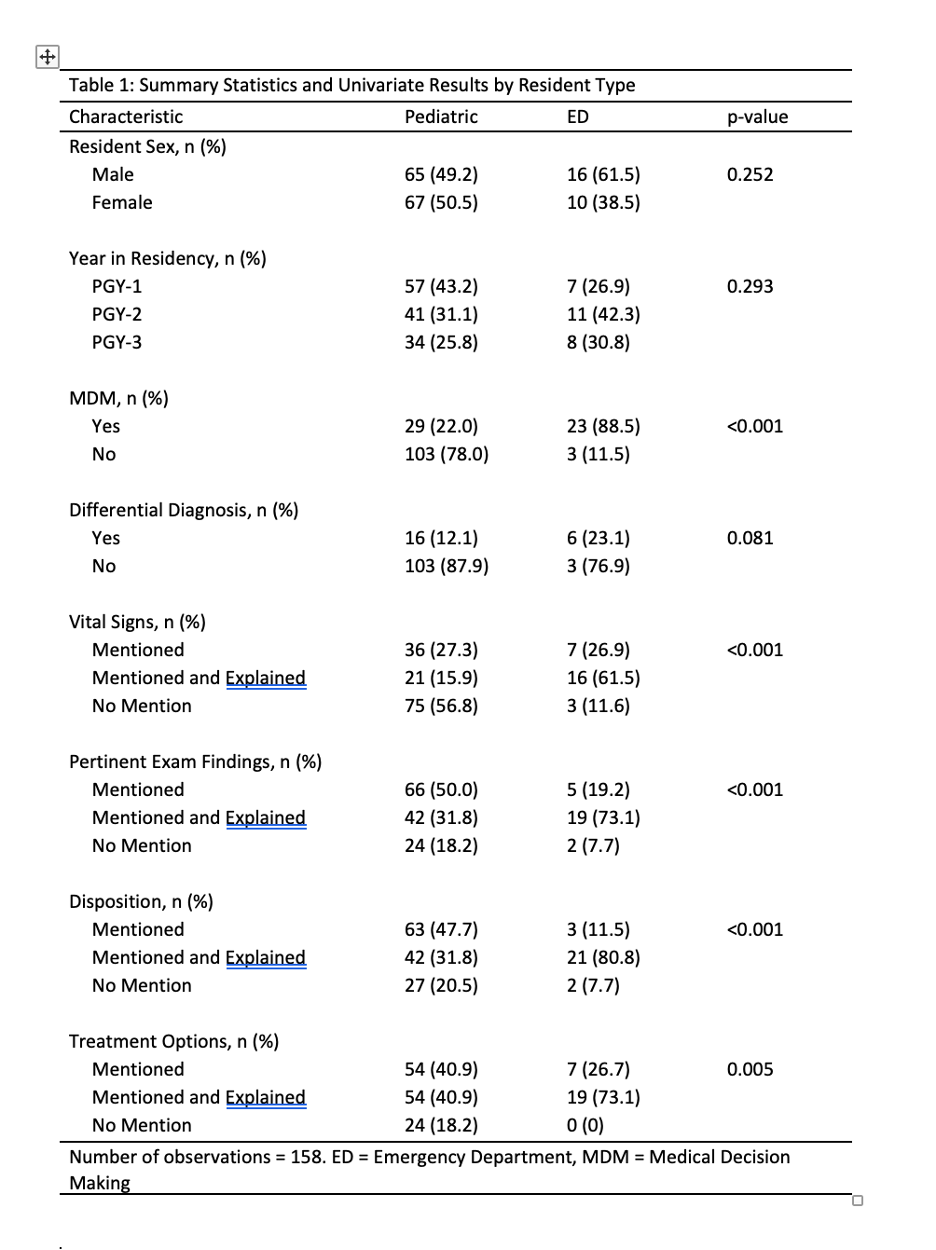Quality Improvement/Patient Safety 4
Session: Quality Improvement/Patient Safety 4
045 - Evaluating differences in documentation between residents in different training programs in a Pediatric Emergency Department using a novel grading tool
Friday, April 25, 2025
5:30pm - 7:45pm HST
Publication Number: 45.4730
John Z. Steed, University of Arkansas for Medical Sciences College of Medicine, Alexander, AR, United States; DAVID MARK. SPIRO, UAMS/ACH, LITTLE ROCK, AR, United States; Lee Crawley, Arkansas Children's Hospital, Conway, AR, United States; Beverly Spray, Arkansas Children's Hospital, Little Rock, AR, United States; Lauren E. Howard, University of Arkansas for Medical Sciences College of Medicine, Little Rock, AR, United States

John Z. Steed, MD (he/him/his)
Fellow
University of Arkansas for Medical Sciences College of Medicine
Alexander, Arkansas, United States
Presenting Author(s)
Background: Documentation of clinical visits has become a vital aspect of a medicine. It’s important for the continuity of care, liability protection and billing. There is very little research on focused education or evaluation of trainee documentation. Poor documentation allows for negative legal, billing and patient care consequences. During a literature review, we were unable to identify a tool to evaluate and compare trainee documentation.
Objective: To identify differences in documentation completeness between Pediatric and Emergency Medicine residents.
Design/Methods: This is a retrospective study evaluating patient charts, which were authored by either Pediatric or Emergency Medicine (EM) residents, currently training at University of Arkansas for Medical Sciences. A novel screening tool was developed (Documentation Analysis for Trainees) to identify important aspects of the medical record for an Emergency Department visit. To negate the variability in types of Emergency Department visits, charts were selected that had a chief complaint of ‘Respiratory distress.’ The Data Analytics Department identified 158 charts authored by residents in one of these two programs (132 Pediatrics and 26 EM). Those charts were reviewed and graded based on the novel scoring tool.
Results: Summary statistics showed no significant difference in resident gender (p = 0.252) or year in residency training (0.293) when comparing included Pediatric and EM residents. Univariate analysis showed a significant difference in documentation between the Pediatric and Emergency Medicine residents in terms of aggregate score, out of a possible ten (Figure 1). The mean score for EM residents was 7.7 compared to the mean scores of Pediatrics residents which was 4.4 (p < .001). When looking at individual sections, Pediatrics residents scored significantly lower than EM residents in documenting the areas of Medical Decision Making (MDM), vital signs, positive exam findings, and ultimate disposition.
Conclusion(s): At this institution, Emergency Medicine residents appear to score higher using this novel scoring rubric compared to Pediatric Residents when charting an emergency department visit. Documentation is important in several aspects of a medical visit. With recent changes in approach to billing and medical decision making, thorough documentation is important for adequate patient care, as well as compliance. There is little research on teaching documentation for pediatric residents. Hopefully, this study will lead to innovation and improvement in documentation education for medical learners.
Resident documentation scorwa
.png)
Statistical Breakdown of Resident Documentation


